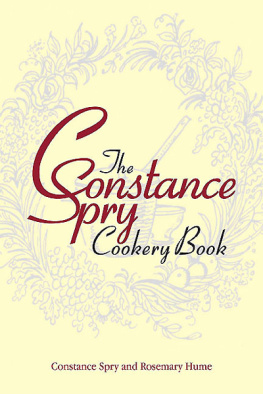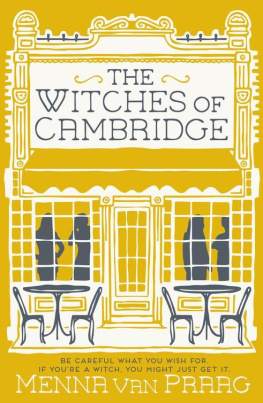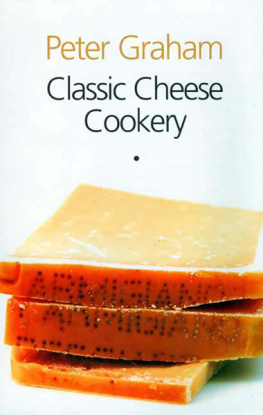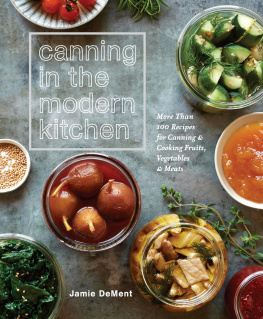For students past and present at Winkfield Place
and the Cordon Bleu Cookery School
This new edition published in 2011 by
Grub Street
4 Rainham Close
London
SW11 6SS
Email:
www.grubstreet.co.uk
Copyright this edition Grub Street 2011
First published by J.M. Dent & Sons Ltd, 1956
Reprinted 1957, 1958, 1960, 1961, 1964, 1967
Reprinted with corrections and minor revisions 1971
Reissued 1978, Reprinted 1983, Reissued 1990
Reissued by Grub Street 2004
Designed and formatted by Sarah Driver
Line Drawings by Fred van Deelen
British Library Cataloguing in Publication Data
Spry, Constance
The Constance Spry cookery book
1. Cookery
I. Title II. Hume, Rosemary
641.5
ISBN 978-1-908117-17-5
EPUB ISBN: 9781610047142
All rights reserved. No part of this book may be reproduced or transmitted in any form or by any means,
electronic or mechanical, including photocopying, recording or any information storage and retrieval
system, without permission in writing from the publisher.
Publishers note to this edition
All that we have done to this classic cookbook is to add metric measurements to all the recipes to assist
the present day cook. The integrity of the original 1956 text remains untouched and unaltered. Hence
you will still find references to pre-decimal coinage, shops that are now long disappeared and terminology
which may to the modern reader sound quaint and outmoded. We had no wish, nor did we
feel it necessary, to update the language of a wonderful period piece which offers a valuable insight
into a bygone age.
Contents
Acknowledgements
To express thanks adequately for all the help received in the writing of a book such as this is difficult. In the appropriate chapters grateful acknowledgment is made of permission to quote from certain favourite volumes, but when that is done there still remain the hundreds of books read and long forgotten, the good dishes eaten in the houses of friends, the inspiring ideas about food gained from unremembered sources. And it is on such books and such experiences that knowledge of food and cooking is built up.
Rosemary and I both hope that we have not quoted from the work of other people without proper acknowledgment, and we certainly have not done so consciously. Nevertheless it is not at all uncommon among cooks to find that what we thought was our own grandmothers exclusive recipe has already been made free to the public in more than one cookery book. Of course, in the long range of classic dishes, where it is right and proper that no change should be made in the formulae, tradition has been followed.
While we think fondly of the shades of Mrs Glasse, Sir Kenelm Digby, and all the other people who wrote recipes in such enchanting and elegant language, we want to thank warmly and in particular those contemporaries who have given us the benefit of their time and thought.
Marjorie Baron Russell and Valerie Pirie for reading, criticizing, and advising; Muriel Downes, our deputy principal at the Cordon Bleu Cookery School in London, and Jean Chaplin at Winkfield for testing, suggesting, and improving recipes; Daphne Holden for much laborious checking and sorting, various members of the staff for kindly help, and quite a few students whose questions have often revealed to us that what we thought was as clear as daylight was really not so at all, and finally, the publishers reader for looking after the consistent presentation of the text and preparing the index.
For the appendix, Wines, their Choice and Serving, which is a rather specialized subject for a cookery book, Rosemary is solely responsible: Thanks are due to Major Bruce Shand for his helpful suggestions and also for reading the manuscript of this section. I also thank the owners of the copyright and the publishers Methuen and Co. Ltd, and Doubleday and Co. Inc., for permission to quote an extract from The Price of Love by Arnold Bennett, and the author, and William Collins Sons & Co. Ltd, for permission to quote an extract from The Sword and the Stone by T. H. White.
Introductory
In music-halls and places where they sing, it is common practice for the star to have a stooge a feed, I believe, is the term used in the profession and it is his job to underline and illumine, as it were, the qualities of the star. In preparing a book of this kind it is not a bad idea to have a stooge, and that is the part that vis--vis Rosemary I have tried to play; if I have done so properly I believe that the plan will have served to make clear a lot of things that professionals, in their knowledge and experience, take for granted, matters which cookery books do not always mention, and things that you arent born knowing. I really wanted to call this book The Reason Why.
But whatever the title, this book is an offering from Rosemary and me to the students of Winkfield Place and the Cordon Bleu Cookery School in London. She and I planned it, thinking it might provide an answer to any question left over when, their training finished, they scattered themselves over the world, as indeed they have done.
I have had the pleasure of gathering up the material and stringing it together, but the technical knowledge, the technique, and most of the recipes are hers, and anything I know that is worth knowing I have gained from her. Sometimes knowledge pours from her as she talks about cooking, sometimes on the other hand Ive battered her with questions about things second nature to her, but mysteries to me.
I am sometimes asked, and I am sure she is too, how it comes that she, a professional cook, and I, whose primary interest lies in flowers, have become allied in this way; and I should like to tell you how it happened.
Before the war each of us was ploughing her respective though not lonely furrow Rosemary had her Au Petit Cordon Bleu restaurant and its attached school and I a shop and a flower school. Like snow in summer students melted away at the proclamation of war, but before the very last of mine disappeared into the war machine, an idea was voiced which bore fruit. After the war, said one of them, as though that relief were just round the corner, could you not add cookery lessons to our flower programme? and then added thoughtfully: I think we shall need it; showing in this constructive suggestion a prophetic vision.
So when the end of war was in sight there came, like an echo from the past, the question: What about that promised cookery and flower school?
When I began to sketch a curriculum I quickly realized that if I carried it out I should merely be following the trail blazed earlier by Rosemary in her school, which had also become a war casualty. Full of doubts and nervous apprehension, I went off to see how she felt about it. The result was an enthusiastic and practical co-operation that has resulted in the London and Winkfield schools and now in collaboration over a book which her real knowledge and experience of food and cooking has made possible.
Little did I realize what was at stake when I went to see her, for I did not realize, nor do I think did she, what a big part cookery was to play in the lives of women after the war. I was the amateur with homely ideas and limited knowledge, enough perhaps to meet simple war-time demands, but completely inadequate to deal with the overwhelming demand for and need of knowledge which have since become manifest. She was the professional, and I often wonder with a cold shiver, generally around two oclock in the morning, what would have happened if I had gone on without the inestimable benefit of her cooperation, without what seems to me to be an inexhaustible mine of information.
That is how this combination of professional and amateur has come about; and I hope you will find the recipe a practical one. You see, what is clear as day and foolproof to Rosemary is often not so for me, and in writing this book I have been a pestilential why man. But Rose, why not? Why cant you? Why do you? until I couldnt have blamed her if she had rationed me to five tiresome questions a day, or deflected her rolling-pin from her puff pastry to me, and with equal vigour.
Next page









